The essential road signs you need to understand in Spain
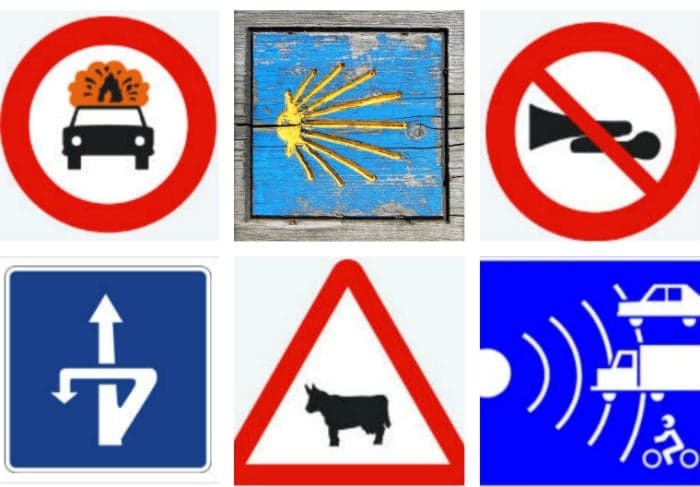
Spain is different. Especially when it comes to its road signage, which can be confusing to the “just visiting” or “newly arrived” in Spain.
Certain road signs are important to know for practical reasons, others say a lot about Spain itself.
Animal signs

Photos of signs: DGT
It's pretty typical when driving in any country to come across signs warning about farm animals and wild fauna in rural areas.
But in Spain, alongside goats, cattle and deer signs you might well see signs warning about wild boar, and it’s a problem you need to take seriously, especially if driving at dusk.
Wild boars are not restricted to rural areas and have proliferated hugely even in urban environments on the outskirts of towns and cities.
They are now the animal that causes the most road traffic accidents in Spain, accounting for 35 percent of insurance claims in cases that involved animals on the roads, overtaking deer, according to a report by AXA insurance company.
Look out also for signs depicting Iberian Lynx which you will find in pockets of countryside around Andalusia, Extremadura and Castilla-La Mancha where the cats have been reintroduced.
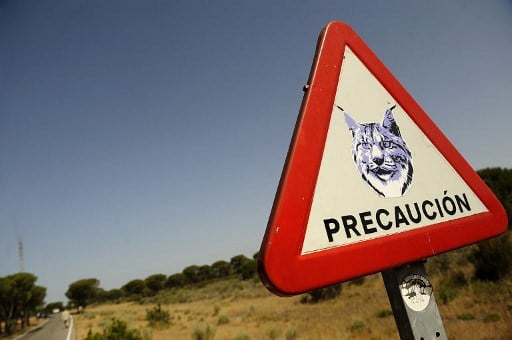
Photo: AFP
Road deaths are still the biggest threat to the animals which now number over 600 in the wild.
During the past five years alone, close to 100 animals have been hit by cars and found dead at the side of the roads, a fact which conservationists hope to limit through the building of culverts and ecoducts that cross under or over highways.
Beware of the jellyfish...
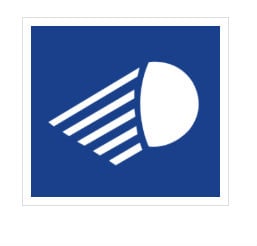
Despite what it looks like, this isn’t another animal sign; this time warning of a swarm of jellyfish ahead.
This sign is seen on the approach to a tunnel and is a reminder to the driver to switch the lights on.
Make sure to take heed of this advice because not having headlamps on in a tunnel can result in a penalty fine.
Ninjas?
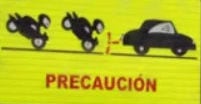
This sign isn’t warning about motorcycle riding ninjas trying to creep up on you but on the very real danger of getting too close to the vehicle in front, especially when there might be a heavy vehicle straining to get up an incline ahead.
Spanish drivers have a tendency to drive very close to the car in front, especially in the fast lane (even if you are travelling at the speed limit overtaking a slow vehicle) and will often flash their headlights at you to move over.
Beam me up?
Nueva señal que anuncia los 300 tramos más peligrosos #CarreterasConvencionales controlados por #radar#Precaucion pic.twitter.com/zfOgts7JgO
— Guardia Civil ?? (@guardiacivil) July 2, 2016
This sign might appear to be warning that you are approaching a dark force of some kind (possibly a UFO?) that is about to suck your vehicle towards it.
Instead it is warning that measures are in up ahead to patrol the speed limit. It could be radar, cameras or speed trap, so modify your speed and stay below the limit.
Take a right to make a left
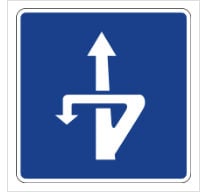
These signs explain a common traffic solution in use in Spain. Often when you need to make a left turn across oncoming traffic and there isn’t a dedicated lane to allow you to do it, or a roundabout, then you will need to Cambio de Sentido – change direction – by using a lane to the right and then wait to cross over.
No horns
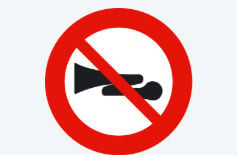
Spend any time on the roads in Spain and you will soon realise the love that Spanish drivers have of the horn.
You’ll hear it the moment you are a split second late pulling away at a traffic light and you’ll even hear it as a sign of greeting between friends.
But in certain places marked by this sign, you are not allowed to sound it. Unfortunately though, rules won’t allow you to install one of these in the road outside your bedroom window.
Carts and carriages
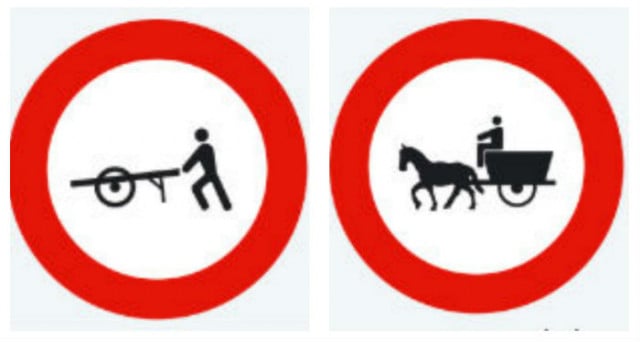
The first one signifies that hand carts are forbidden from entering and the second horse carriages. The latter are not just a throwback to the olden days but are in place in cities where there are still traditional horse and carriage rides, such as Sevilla and Palma in Mallorca.
Many Andalusian towns stage romerias – the most famous one being the pilgrimage to El Rocio held at Pentecost – when hundreds of horse-drawn carriages will transport pilgrims for the fiesta.
Roundabouts
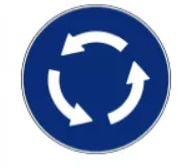
We all recognise the sign for a roundabout but few in Spain actually understand how they work.
Read The Local's guide on how to navigate them safely.
Everything you need to know about driving around roundabouts in Spain
Explosive loads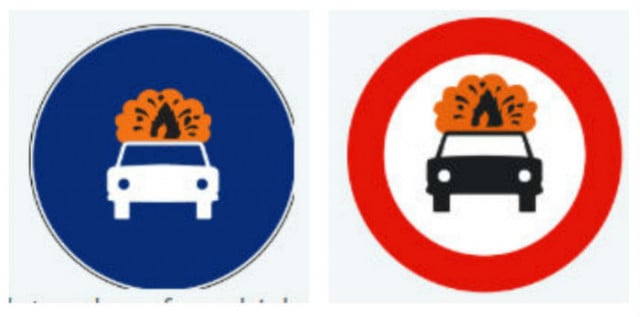
This sign is important to know for those who plan to drive around Spain transporting explosives.
The one on the left shows that you have a dedicated lane while on the sign on the right prohibits entry to vehicles with explosive materials.
This might sound like an unusual cargo but must be more common than one thinks as firework displays frequently form part of the celebrations at local fiestas and we all now how many hundreds of them there are across Spain each year.
P is for...
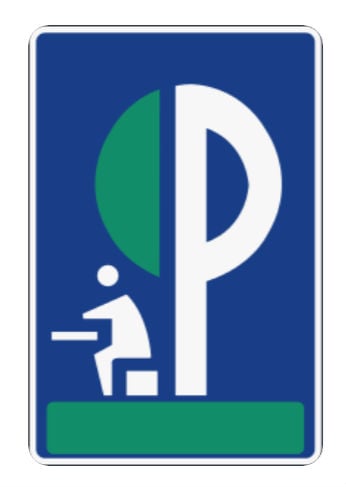
This is a sign that you will see a lot when driving on highways across Spain.
It may appear to be a man sitting on a toilet but this is entirely deceiving as these areas, often little more than laybys off the main highway, more often than not, don’t actually provide bathroom facilities.
They are a place to park up and stretch your legs and, may even include a picnic table, but little more.
Yellow arrows or shells
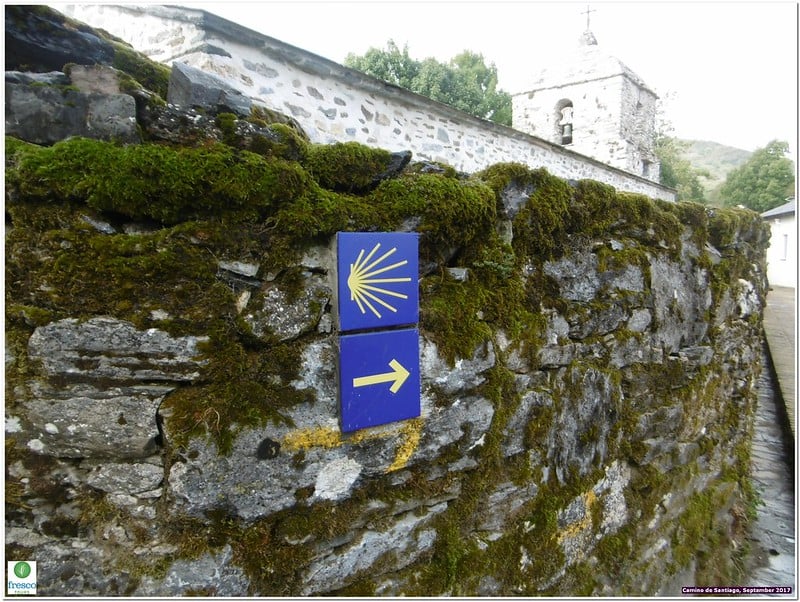
Photo: Frescotours/Flickr
Across Spain you will find signs pointing out the Camino de Santiago. They take the form of scallop shells, sometimes in cast bronze embedded un the pavement or more often yellow daubed symbols on a wall or post, or just a yellow arrow indicating the direction.
These indicate walking routes, so don't be tempted to follow the signs by car.
Bulls
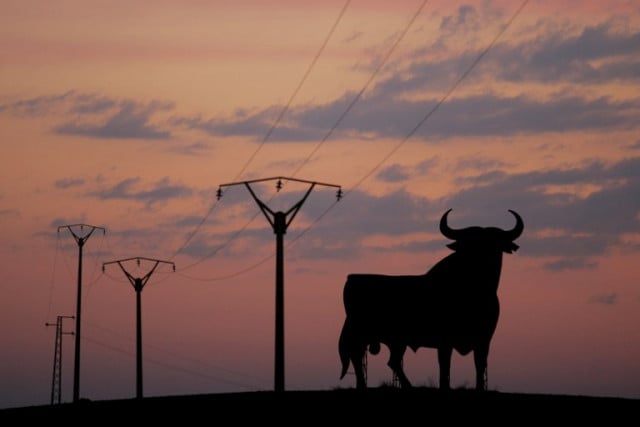
Photo: AFP
You wouldn’t be driving in Spain if you didn’t occasionally see a giant silhouette of a bull appear from time to time along the roadside.
These are Osborne bulls that signify nothing particular to the driver but symbolise a strong Spanish cultural tradition. To find out more read the explainer here. Osborne bulls: The story behind Spain's iconic roadside silhouettes
READ MORE:
Comments (2)
See Also
Certain road signs are important to know for practical reasons, others say a lot about Spain itself.
Animal signs

Photos of signs: DGT
It's pretty typical when driving in any country to come across signs warning about farm animals and wild fauna in rural areas.
But in Spain, alongside goats, cattle and deer signs you might well see signs warning about wild boar, and it’s a problem you need to take seriously, especially if driving at dusk.
Wild boars are not restricted to rural areas and have proliferated hugely even in urban environments on the outskirts of towns and cities.
They are now the animal that causes the most road traffic accidents in Spain, accounting for 35 percent of insurance claims in cases that involved animals on the roads, overtaking deer, according to a report by AXA insurance company.
Look out also for signs depicting Iberian Lynx which you will find in pockets of countryside around Andalusia, Extremadura and Castilla-La Mancha where the cats have been reintroduced.

Photo: AFP
Road deaths are still the biggest threat to the animals which now number over 600 in the wild.
During the past five years alone, close to 100 animals have been hit by cars and found dead at the side of the roads, a fact which conservationists hope to limit through the building of culverts and ecoducts that cross under or over highways.
Beware of the jellyfish...

Despite what it looks like, this isn’t another animal sign; this time warning of a swarm of jellyfish ahead.
This sign is seen on the approach to a tunnel and is a reminder to the driver to switch the lights on.
Make sure to take heed of this advice because not having headlamps on in a tunnel can result in a penalty fine.
Ninjas?

This sign isn’t warning about motorcycle riding ninjas trying to creep up on you but on the very real danger of getting too close to the vehicle in front, especially when there might be a heavy vehicle straining to get up an incline ahead.
Spanish drivers have a tendency to drive very close to the car in front, especially in the fast lane (even if you are travelling at the speed limit overtaking a slow vehicle) and will often flash their headlights at you to move over.
Beam me up?
Nueva señal que anuncia los 300 tramos más peligrosos #CarreterasConvencionales controlados por #radar#Precaucion pic.twitter.com/zfOgts7JgO
— Guardia Civil ?? (@guardiacivil) July 2, 2016
This sign might appear to be warning that you are approaching a dark force of some kind (possibly a UFO?) that is about to suck your vehicle towards it.
Instead it is warning that measures are in up ahead to patrol the speed limit. It could be radar, cameras or speed trap, so modify your speed and stay below the limit.
Take a right to make a left

These signs explain a common traffic solution in use in Spain. Often when you need to make a left turn across oncoming traffic and there isn’t a dedicated lane to allow you to do it, or a roundabout, then you will need to Cambio de Sentido – change direction – by using a lane to the right and then wait to cross over.
No horns

Spend any time on the roads in Spain and you will soon realise the love that Spanish drivers have of the horn.
You’ll hear it the moment you are a split second late pulling away at a traffic light and you’ll even hear it as a sign of greeting between friends.
But in certain places marked by this sign, you are not allowed to sound it. Unfortunately though, rules won’t allow you to install one of these in the road outside your bedroom window.
Carts and carriages

The first one signifies that hand carts are forbidden from entering and the second horse carriages. The latter are not just a throwback to the olden days but are in place in cities where there are still traditional horse and carriage rides, such as Sevilla and Palma in Mallorca.
Many Andalusian towns stage romerias – the most famous one being the pilgrimage to El Rocio held at Pentecost – when hundreds of horse-drawn carriages will transport pilgrims for the fiesta.
Roundabouts

We all recognise the sign for a roundabout but few in Spain actually understand how they work.
Read The Local's guide on how to navigate them safely.
Everything you need to know about driving around roundabouts in Spain
Explosive loads
This sign is important to know for those who plan to drive around Spain transporting explosives.
The one on the left shows that you have a dedicated lane while on the sign on the right prohibits entry to vehicles with explosive materials.
This might sound like an unusual cargo but must be more common than one thinks as firework displays frequently form part of the celebrations at local fiestas and we all now how many hundreds of them there are across Spain each year.
P is for...

This is a sign that you will see a lot when driving on highways across Spain.
It may appear to be a man sitting on a toilet but this is entirely deceiving as these areas, often little more than laybys off the main highway, more often than not, don’t actually provide bathroom facilities.
They are a place to park up and stretch your legs and, may even include a picnic table, but little more.
Yellow arrows or shells

Photo: Frescotours/Flickr
Across Spain you will find signs pointing out the Camino de Santiago. They take the form of scallop shells, sometimes in cast bronze embedded un the pavement or more often yellow daubed symbols on a wall or post, or just a yellow arrow indicating the direction.
These indicate walking routes, so don't be tempted to follow the signs by car.
Bulls

Photo: AFP
You wouldn’t be driving in Spain if you didn’t occasionally see a giant silhouette of a bull appear from time to time along the roadside.
These are Osborne bulls that signify nothing particular to the driver but symbolise a strong Spanish cultural tradition. To find out more read the explainer here. Osborne bulls: The story behind Spain's iconic roadside silhouettes
READ MORE:
Join the conversation in our comments section below. Share your own views and experience and if you have a question or suggestion for our journalists then email us at [email protected].
Please keep comments civil, constructive and on topic – and make sure to read our terms of use before getting involved.
Please log in here to leave a comment.